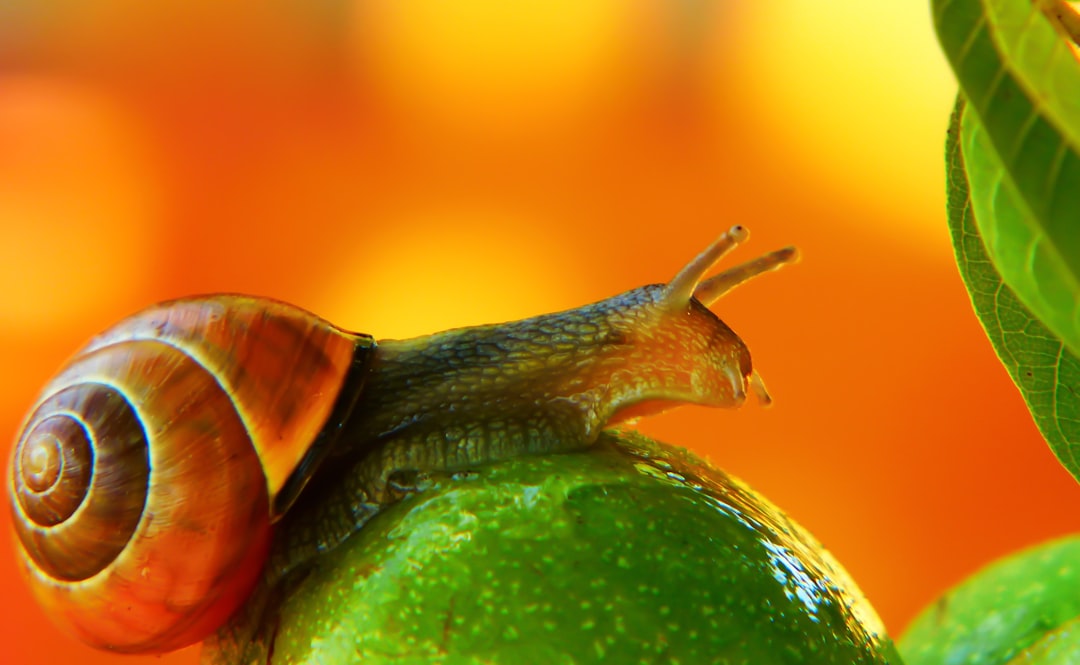Maintaining a healthy garden is a difficult task. It requires dedication to deal with ever-changing weather conditions, cutting, potting, planting, watering, and more. All of this and not even mention keeping pests at bay. Which can be a lot harder than it might seem.
Australia is home to one of the most diverse pest populations in the world. Anything from tiny aphids to giant grubs can completely obliterate your garden. Even pest control services sometimes struggle.
You need to be prepared and act swiftly, with an iron fist, to get on top of it. Your efforts to set up a garden in your yard will be useless if you don’t consider how you’ll get rid of pests. Here are some of the most common garden pests in Australia and how to deal with them.
Aphids

Aphids are small pear-shaped insects that breed quickly and love turning your garden into an open buffet. Their asexual reproduction allows them to multiply at alarming rates, and once they gain some momentum, it takes a Herculean effort to get rid of them. Aphids vary in color depending on the species, but their bodies are always pear-shaped, and they always sport a pair of big antennae.
You won't necessarily need one of the local pest control companies to tell you when you have an aphid infestation. Their activity cannot go unnoticed since they cause unnatural leaf fall, stunted growth, curling, browning, or yellowing of the leaves. Aphids produce honeydew, which can also attract different ant species for a full-on pest party.
The way to deal with an aphid infestation in your plants is to either:
- Remove them physically (a strong jet stream of cold water will do the trick, but you need to be careful not to destroy your plants).
- Attract beneficial insects - ladybugs are natural predators of aphids.
- Use horticultural oil - 2 cups of vegetable oil mixed with ½ cup of dishwashing detergent and solved into a liter of water gives you a nice natural spray you can use against aphids. It’s one of the natural remedies you can try but avoid using it in the hot weather as it will burn your plants.
If none of the above solutions work, it might be best if you start researching termite treatment costs and hire professionals who can do the job for you.
Letting Aphids live and breed in your garden can eventually lead to bigger and more expensive problems. In worse cases, these pests can even become the reason why your garden won’t thrive.
The damage might not stop in your garden either, Aphids are similar to Termites in that they are both tiny, yet when there are lots of them, they really can cause massive damage to your home.
Australian Plague Locusts
With a name like that, you know these guys are bad news. They don’t call them “plague” locusts for nothing - they begin to swarm sometime during the spring and stop when all the crops around them are eaten. Or until they get killed - whichever comes first.
Each year, plague locusts cost hundreds of millions to billions of dollars worth of damages to crops and are one of the most serious problems agriculture has to deal with. So imagine what happens when even a small swarm of these flies through your garden. You can kiss your plants goodbye. What’s left of them, anyway?
The good news is not all hope is lost. You can use Kaolin clay on your plants which will repel many insects, including plague locusts. Another strategy known to remove Australian plague locusts effectively is to apply insecticide by air or on the ground. When doing the latter, make sure that you target the pests’ resting and breeding areas.
Snails and Slugs

Snails and slugs are famous for being slow. They should be famous for how quickly, despite being so slow, they can destroy a garden. Do not allow their looks to deceive you - they may move slowly, but underneath those cute shells lie a real destructive force of nature.
If you begin finding holes in the leaves of your plants, destroyed seedlings, or suspicious silvery trails on and around your plants, then you probably have a snail problem. You can be doubly sure this is the case if it has rained recently since slugs and snails avoid the sunlight but always come out after the rain.
You can deter them by using:
- Garlic - like vampires, they really hate garlic and sunlight.
- Spray some coffee on the plants - yes, seriously. As you may know, caffeine is, first and foremost, a natural pest control agent. It’s extremely effective against these pests.
- Beer trap – Snails and slugs love the smell of tap beer, which is why this can be used as an effective tool in trapping them. To do this, dig a small hole enough to fit a tall glass underground and let the rim of the glass sit just above soil level. The snails and slugs will be attracted to the smell of tap beer and will eventually drown inside the glass.
- Egg shells – Egg shells are commonly disposed of in homes, but if you have a snail and slug problem in your garden, it’s best to keep them and use them. Crush the egg shells into small pieces and put them around your plants. This works as an effective barrier against snails and slugs, especially for small plants.
- Barriers around the plants are a good pest-preventive method in general.
Tree Borers
“Borers” is a term used to describe the larval stage of different species. They are called that because they bury in the trees and eat their way out during the larval stage. This is bad news for trees because a large number of borers can lead to a tree’s early demise.
How can you tell if you have borers? Openings in the trunk and holes in the branches are usually a dead giveaway. If that’s not enough, you can look for frass around a hole in the trunk. It is essential to check regularly for any alarming signs, especially if you plan on using backyard trees for treehouse projects.
The best way to get rid of this pest is to improve the health of the tree. Taking good care of your trees is a great preventative measure. This includes regularly inspecting the If a tree is seriously affected, though - cut your losses immediately.
Whiteflies

Whiteflies look like small white moths. They drink sap juice which causes stunted growth in the trees and causes yellowing on the leaves (similar to aphids). Even if you don’t notice any visible symptoms, you will almost definitely notice a white cloud of whiteflies flying around your plants if you’re having problems with this pest.
The best way to deal with them is to act as early as possible:
- Remove problematic leaves as soon as you notice there is a problem.
- Hose them down with water (which will only work if the infestation isn’t too severe).
- Attract ladybugs to your garden.
- Use a short-lived organic pesticide to control the growth and spread of whiteflies in your garden.
Christmas Beetle

In Australia, a common insect found in your garden is the Christmas Beetle. While the larvae live in the soil and eat your garden grass roots, the adults are known to eat leaves and mainly feed on eucalypt specimens. You will mainly find them from November to February. Their shiny body identifies them; their colour varies from reddish-brown to yellowish-brown.
The only way to control them is by carefully monitoring your garden plants for any signs of bitten/eaten leaves. When spotted, either use a fly net or a jet spray to knock them off, and you can smash it using 2 wooden blocks. Controlling these kinds of insects is difficult as they are very quick at defoliating plants. However, the sooner you take action upon finding them, the easier it will be to remove them.
Fruit Flies

Fruit flies are known to infect various fruits and vegetables, which is why they pose a threat to horticulture. The female adults lay their eggs beneath the fruit’s skin. Their larvae are called maggots, and they begin to feed on the fruit from the inside once they have hatched so that it might rot and fall off. They are active from September to May.
You can identify a fruit fly infestation if you notice many flying around your fruits and vegetables, if you notice any punctured wounds on them, or if you notice off-white-looking maggots. The only way to control them is by:
- Gathering the damaged fruits and vegetables, storing them in a sealed plastic bag, and keeping them under direct sunlight.
- You could also boil the infected vegetation and feed your poultry.
- Use baits that are protein-based to catch both female and male flies.
- Use pheromone traps to kill the males before they begin mating.
Weevils

In Australia, weevils are considered a nuisance due to the damage they are known to cause to crops and grains. Although there are various types of species, there is one common trait that they all possess; an extended snout.
Weevils are known to start causing damage right from the larval stage by feeding on plant roots in the soil, and when they mature into adults, they feed on the plant leaves. You can identify a weevil infestation if you notice chewed roots, low plant vigour, holes in the shape of scallops along the margin of the leaf, or an adult crawling on your backyard plants.
The only way to control a weevil infestation organically is by:
- When possible, rotate your garden crops.
- Introduce birds like ducks, chickens, and guinea fowl to your garden.
- Water your plants only when it is required to avoid making your soil extra moist since it attracts weevils.
- Keep a deep pan of water in your garden so that the weevils climb into it and drown.
- Place horticultural glue, aluminium foil, or greasy sacks under the trees that are susceptible to catching weevils.
- Drown the caught weevils in soapy water to kill them.
- Eliminate the weeds and debris from your garden to keep weevils and other insects at bay.
- During the seedling stage, place protective covers over the vegetable rows.
Thanks for reading
These are some of the most common pests you can find in your garden and the easy ways to take care of them.







